WORLD WATER DAY: RECOGNIZING ADVANCED TECHNOLOGIES THAT HELPED HUMANKIND OVERCOME WATER SCARITY
Nguyen Minh Quang
22 March 2020
Prelude
The World Water Day is celebrated annually on 22 March to enhane the awareness on the importance of water to lives of people, security of humankind and healthy ecosystem. The theme of the World Water Day this year is “Water and climate change” emphasizing the urgency of water security strengthening and creation of long term water resources to respond to increasing global climate change context. [1]
According to the UN Water, the annual water consumption has increased by 1% since 1980s and by 2050 the ratio will be higher by 20 -30 %. More than 2 billion people are living in water scarce countries and as many as 4 billion people are suffering severe water shortage for at least 1 month in a year. The water scarcity pressure will continue due to increasing water demands and climate change impacts [2]. It is now happening that water level in the Mekong river is at historic low level [3], drought and saltwater intrusion are becoming ever harsh and detrimental in the Mekong delta [4].
The world is facing water crisis. Fortunately, advanced technologies are helping us overcome such crisis. On the occasion of World Water Day, we shall spend some time to honor advanced technologies relating to water resources with a sprit full of hope for the future.
Adversity brings wisdom
Being a small nation located in one of the arid areas in the world and having 50% of natural land as deserts, Israel has been always facing water scarcity since 1948. Having limited rainfall, extreme weather conditions, waste water, inadequate infrastructure and increasing population, Israel managed to overcome all these difficulties and challenges to become a “super water nation” in the world thanks to efforts of the Government, experts and high-technology companies [5].
Necessity is the mother of all inventions. It is true in the case of Israel as it is pioneering in water engineering with all negative aspects on its side. It is also rule of nature and Israel has no other choice [5].
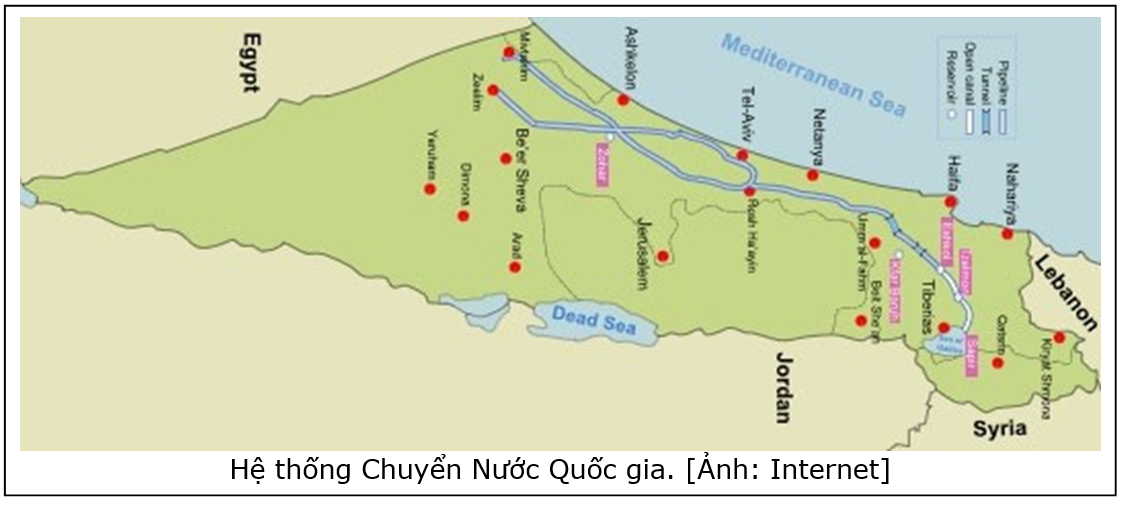 National water diversion system (Source: internet)
National water diversion system (Source: internet)
One of the first efforts is the National water diversion system which is also one of the earliest water engineering investments of the Israel. It is the first water distribution means of the country which was supported by the 1st Prime Minister of Israel - David Ben- Gurion. The system was developed in the 1950s and finished in 1964. This is the largest irrigation project in Israel with giant pipelines, canals, tunnels, reservoirs and pumping stations to get fresh water from Galilee Sea, the largest freshwater lake in Israel, diverting water to the South through a distance of 81 miles [5].
Many strategies and policies of the Government of Israel have been established throughout Israel's history to ensure constant supply of water resources to people and to encourage efficient water consumption. These efforts include Israel's National Long-term Master Plan for Water Sector, public and private inventions in key areas, especially those relate to water demand management, water use efficiency, supplemental water and governmental supports to relevant inventions, notably the New Tech Program. [6]
List of notable water inventions: (a) Purification and reuse of most domestic wastewater in agriculture, (b) Advanced irrigation methods such as drip irrigation to the root, (c) Developing new crop varieties with productivity 10 times as much as normal ones yet consuming the same amount of water, (d) Drill wells to 1,500 m depths and pump up to a height of 500 m, (e) Desalinize seawater and brackish water, and (f) Control algae in reservoirs [6]. And the most recent invention is making water from air [7].
Admirable technical advances
Drip irrigation to the root
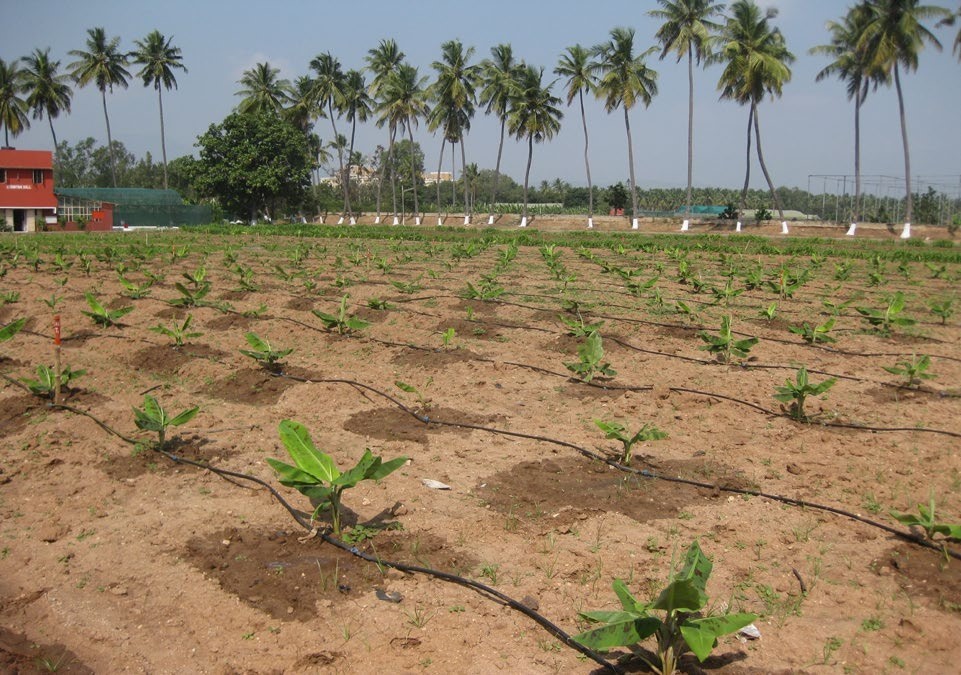
Drip irrigation to the root [Photo: WordPress]
This is an Israeli advanced technology which has changed the face of agriculture in the world as its potential to significantly increase food resources. It allows water and fertilizer saving by dripping water very slowly to the root zone above or below the ground. The technique was invented in Israel by Simcha Blass and his son Yeshayahu and finalized by Rafi Mehudar after that. Instead of being discharged through small and easily clogged holes, water is drained through longer and larger pipes and friction is used to slow down water flow in pipes. The first experimental system was established by Blass in 1959, registered in 1964 by Kibbutz Hatzerim to establish Netafim company [8]. In February 2018, Netafim sold 80% of its stocks to the Mexican company – the Mexichem, marking another milestone in Israel's water technology expansion around the world [5].
Turning saltwater into fresh water
Israel is perhaps better known for its pioneering desalination techniques, whereby salts and minerals are removed from saltwater and fresh water is produced through reverse osmosis (RO) methods. RO uses a semi-permeable membrane designed to allow through water only not solutes. This process requires a sufficiently high pressure on the side of high concentration of the semi-permeable membrane to overcome the natural osmotic pressure of seawater, i.e.27 bar (390 psi). RO is commonly used for desalination, but since the 1970s, it has also been used to filter water supplied to households, medical purposes and industries [9].
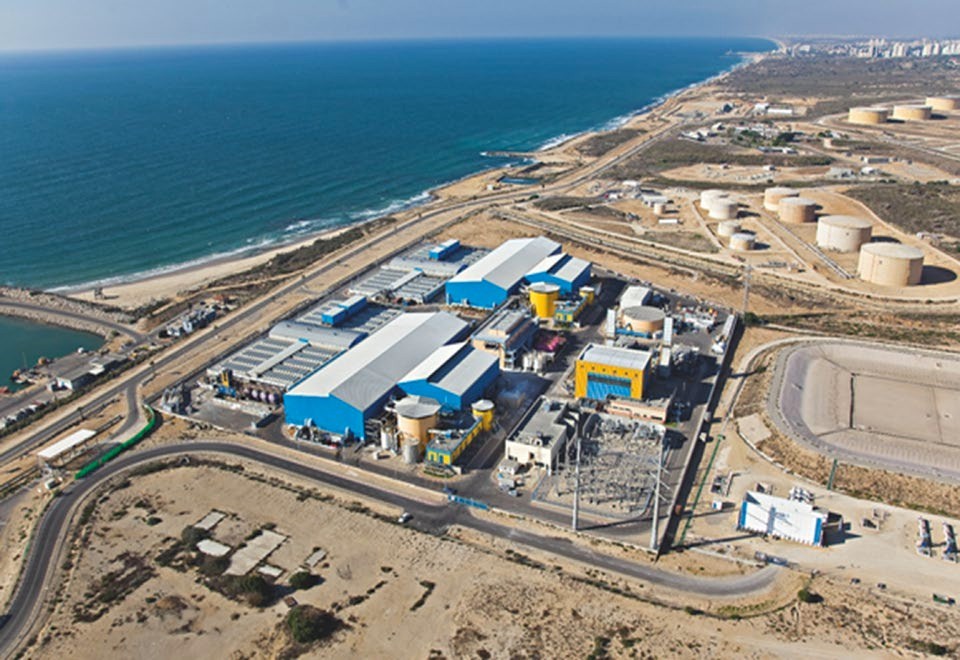
Sorek desalination plants in Israel. [Photo: WordPress]
The first water desalination plant in Israel was built in Eilat in the 1960s, but it was not until 1999, it became a common method for producing drinking water. Currently, Israel has 34 small saltwater desalination plants using brackish water with a capacity of about 17 million m3 annually, and 5 large scale desalination plants using seawater are providing over 60% of domestic water supply in Israel. Three of these 5 plants are located in Sorek, Ashkelon, and Hadera, i.e. along the coast of Israel and owned the IDE company for 50% of stocks (Israel Desalination Engineering). The Kadima-based IDE is a world-leading water purifier company specializing in developing, designing and operating desalination and water filtering plants, disseminating Israeli knowledge and Israel’s technical processes to 400 factories in 40 countries, including Australia, China, India, Chile and the United States. One of the most famous desalination plants in the world of the IDE is the $ 1 billion Carlsbad desalination Plant located in San Diego, California. The plant is set up upon request of Governor Brown to help deal with water shortages due to drought [5].
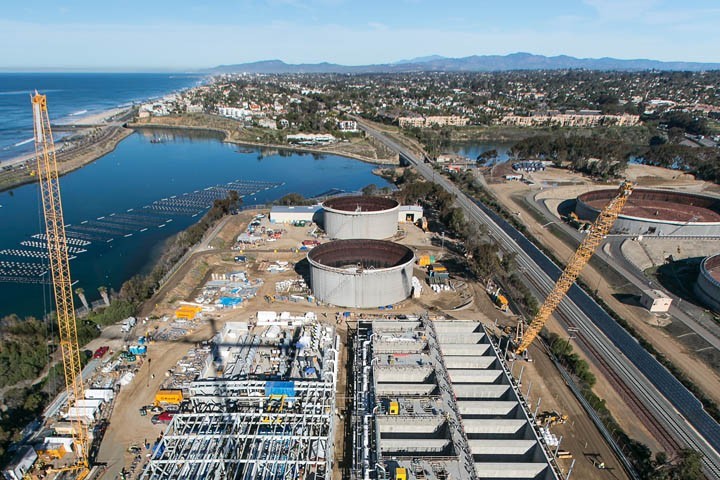
Carlsbad desalination plants in California. [Photo: Butier Engineering]
Collecting water vapor from the air is not a new invention - many companies sell atmospheric water generators for domestic and commercial uses - but Israel's Water-Gen machines are more effective and productive than the introduced Air-cooled chillers [7].
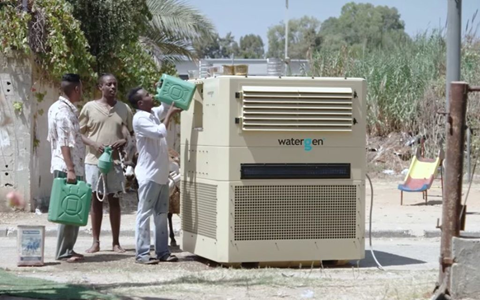
Water-Gen's Atmospheric water generator [Photo: The Times of Israel]
Water-Gen's atmospheric water generator uses the “GENius” heat exchanger to cool the air and condense water vapor. Air enters the heat exchanger to be dehumidified and water is removed from the air and collected in the container. From there, the water passes through a sophisticated comb system to eliminate chemicals and microorganisms. Purified water is stored in a container to preserve water quality. It can supply as much as 250-800 liters (65-210 gallons) of drinking water per day depending on temperature and humidity of the air for an electricity cost of 2 cents per liter. The device was developed for the Israel Defense Forces (IDF) and is sold to armies in 7 other countries around the world, yet even the public can also benefit this technique [7].
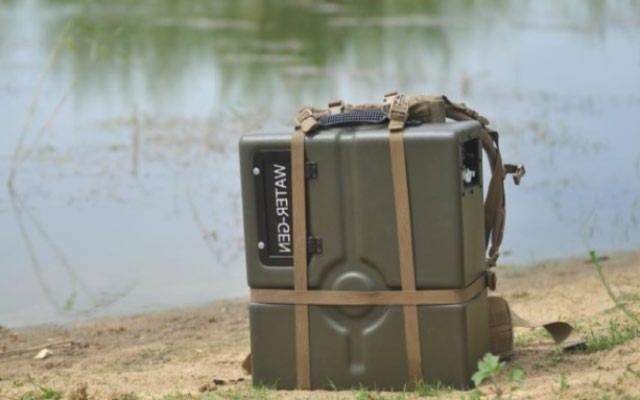
Water-Gen's Atmospheric water generator for armies [Photo: The Times of Israel]
Conclusions
On March 22 every year, the United Nations celebrates World Water Day to raise humanity's awareness on water - the essential of life and health of ecosystems. The theme of the World Water Day this year is “Water and climate change”, emphasizing the urgency of water security enhancing and creation of long term water resources to respond to increasing global climate change context.
With increasing water demand, coupled with climate change impacts, the world is currently facing a water crisis or in other word for soft, water shortages. Being driven by this vital need, many technological advances have been invented to help humanity overcome these difficulties. A typical example is Israel, a small nation located in one of the arid areas in the world and having 50% of natural land as deserts, Israel have been always facing water scarify since 1948. Having limited rainfall, extreme weather conditions, waste water, lacking infrastructure and increasing population, Israel managed to overcome all these difficulties and challenges to become a “super water nation” in the world thanks to efforts of the Government, Experts and high-technology companies.
Israel has developed many advanced techniques to address the nation's water shortage. Most prominent inventions are drip irrigation to the root, turning saltwater water into fresh water, and generating water from the air. These technological advances have been applied in many other countries, providing a safe, reliable, and lasting source of fresh water for arid or water scarce regions in the world.
It is such a technological achievement worthy of recognition.
References
[1] Globalwaters. Accessed February 25, 2020. “World Water Day 2020: Water and Climate Change.” Globalwaters.org.
https://www.globalwaters.org/event s/world-water-day-2020
[2] UN Water. 18 March 2019. “World Water Development Report 2019.” United Nations.
https://www.unwater.org/publicatio ns/world-water-development- report-2019/
[3] Mekong River Commission. 18 July 2019. “Mekong water levels reach low record.” Mekong River Commission Secretariat.
http://www.mrcmekong.org/news- and-events/news/mekong-water- levels-reach-low-record/
[4] TTXVN. 18 tháng 2 năm 2020. “Hạn mặn ở Đồng bằng sông Cửu Long – Bài 1: Diễn biến phức tạp, khó lường.” BNews.
https://bnews.vn/han-man-o-dong- bang-song-cuu-long-bai-1-dien- bien-phuc-tap-kho- luong/147895.html
[5] Simona Shemer. March 22, 2018. “On World Water Day, A Look At The Innovative Tech That Makes Israel A Water Superpower.” NoCamels.
https://nocamels.com/2018/03/on- world-water-day-a-look-at-the- innovative-tech-that-makes-israel- a-water-superpower/
[6] Ariel Rejwan and Yossi Yaacoby. April 2015. “Israel: Innovations overcoming water scarcity.” OECD Observer.
http://oecdobserver.org/news/fullst ory.php/aid/4819/Israel:_Innovatio ns_overcoming_water_scarcity.html
[7] Giovanna Rajao and Michael Schwartz. April 24, 2014. “This machine makes drinking water from thin air.” CNN.
https://www.cnn.com/2014/04/24/t ech/innovation/machine-makes- drinking-water-from-air/index.html
[8] Wikipedia. 24 February 2020. “Drip Irrigation.” Wikipedia.
https://en.wikipedia.org/wiki/Drip_i rrigation
[9] Wikipedia. 6 February 2020. “Reverse Osmosis.” Wikipedia.
https://en.wikipedia.org/wiki/Rever se_osmosis#cite_note-8